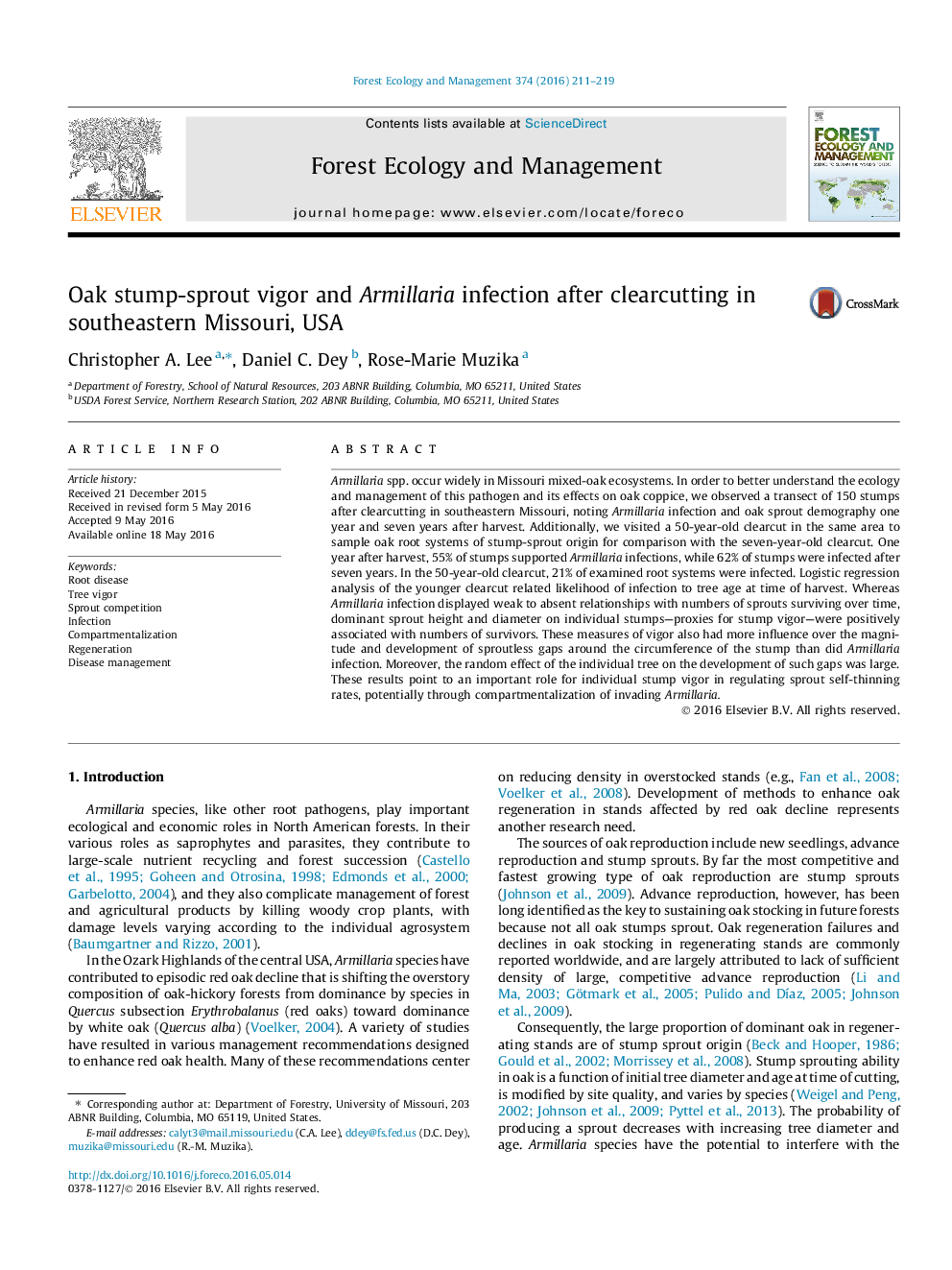| Article ID | Journal | Published Year | Pages | File Type |
|---|---|---|---|---|
| 85905 | Forest Ecology and Management | 2016 | 9 Pages |
•7 years after clearcutting, 62% of surviving oak stumps had Armillaria infections.•Infection was related to tree age at time of harvest.•Infection prevalence in a nearby 50-year-old clearcut was 21%.•We observed a spectrum of stump vigor and infection characteristics.
Armillaria spp. occur widely in Missouri mixed-oak ecosystems. In order to better understand the ecology and management of this pathogen and its effects on oak coppice, we observed a transect of 150 stumps after clearcutting in southeastern Missouri, noting Armillaria infection and oak sprout demography one year and seven years after harvest. Additionally, we visited a 50-year-old clearcut in the same area to sample oak root systems of stump-sprout origin for comparison with the seven-year-old clearcut. One year after harvest, 55% of stumps supported Armillaria infections, while 62% of stumps were infected after seven years. In the 50-year-old clearcut, 21% of examined root systems were infected. Logistic regression analysis of the younger clearcut related likelihood of infection to tree age at time of harvest. Whereas Armillaria infection displayed weak to absent relationships with numbers of sprouts surviving over time, dominant sprout height and diameter on individual stumps—proxies for stump vigor—were positively associated with numbers of survivors. These measures of vigor also had more influence over the magnitude and development of sproutless gaps around the circumference of the stump than did Armillaria infection. Moreover, the random effect of the individual tree on the development of such gaps was large. These results point to an important role for individual stump vigor in regulating sprout self-thinning rates, potentially through compartmentalization of invading Armillaria.
